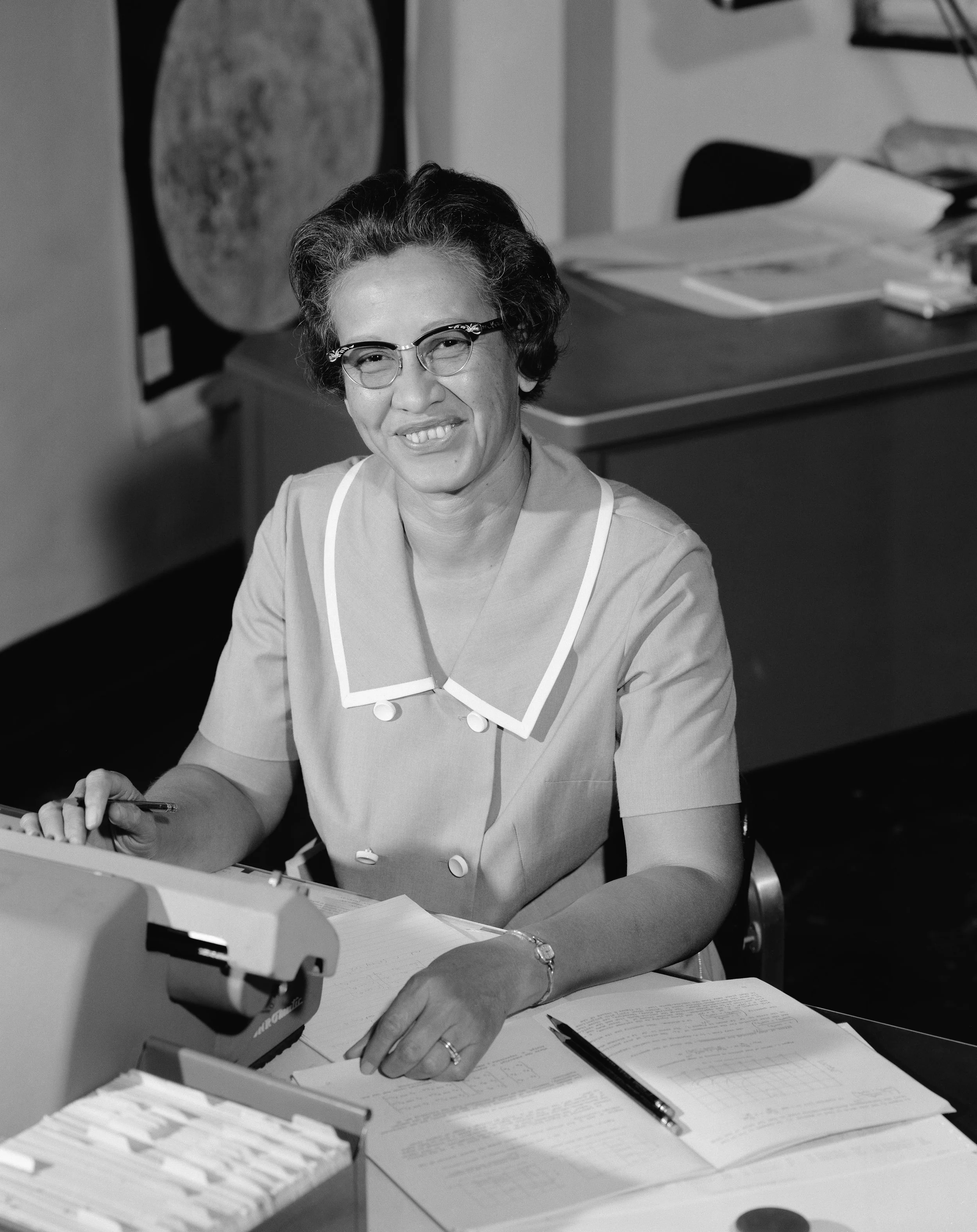Katherine Johnson: The Mathematician Who Helped Put America in Orbit
Katherine Johnson’s life is a powerful reminder that curiosity, discipline, and quiet determination can change the course of history. As a trailblazing mathematician at the National Advisory Committee for Aeronautics (NACA) and later NASA, Johnson performed the precise calculations that made early American spaceflight possible. Her brilliance shaped the safe trajectories of missions that carried astronauts beyond Earth’s atmosphere and laid the foundation for future exploration.
Today, her legacy continues to inspire students everywhere, especially young Black girls, to see themselves as innovators, leaders, and problem-solvers in STEM.
A brilliant mind and an early start
Born in 1918 in West Virginia, Katherine Johnson showed exceptional mathematical talent from an early age. She entered college ahead of schedule and earned her degree in mathematics and French at a time when educational and professional opportunities for Black women were severely limited. Despite these barriers, she pursued work that required exacting skill and careful reasoning, qualities that would ultimately define her groundbreaking career.
From “human computer” to mission-critical mathematician
Katherine Johnson began working at Langley Memorial Aeronautical Laboratory in the 1950s in a section of the workforce composed of “human computers,” people who performed complex calculations by hand. Over time she moved from carrying out calculations to authoring and verifying them for major aerospace projects.
Her mathematical precision became crucial during the early days of the U.S. space program. In 1962, as astronaut John Glenn prepared for the first American orbital flight, Glenn famously asked that Johnson personally verify the electronic computer’s trajectory calculations before his mission. Her confirmation helped secure confidence in both the safety and success of the flight.
Johnson also contributed to other landmark efforts, including computations for the Apollo lunar missions and later programs that required exact navigation and timing. Alongside these technical achievements, she navigated and challenged a workplace and a society where segregation and discrimination were routine, demonstrating resilience as well as exceptional professional skill.
Recognition and legacy
Later in life, Katherine Johnson received public recognition for her decades of service and for opening doors for others. She was awarded the Presidential Medal of Freedom in 2015, and her life and work reached new audiences through the book and film Hidden Figures, which highlighted Johnson and her colleagues as essential contributors to NASA’s early achievements.
Beyond awards and media attention, Johnson’s most enduring legacy is the example she set: rigorous problem solving, a commitment to accuracy, and the courage to claim one’s place at the table. For students, her career offers a roadmap for how foundational math skills and careful attention to detail can translate into real-world impact.
What Katherine Johnson’s story teaches students and families
Foundations matter. Johnson’s success was built on mastery of core mathematical concepts. Early confidence with fractions, algebra, and geometry lays the groundwork for higher-level problem solving.
Precision is powerful. STEM often rewards careful, methodical thinking. Teaching students to check their work, question assumptions, and reason step by step pays off in the classroom, the lab, and real-world contexts.
Persistence in the face of barriers. Johnson worked during an era of overt segregation and bias. Her career demonstrates that skills combined with persistence and professionalism open doors, and that representation matters for future generations.
Math connects to real missions. When students see that a classroom skill can become a life-saving calculation for spaceflight, learning becomes more meaningful and inspiring.
Classroom and tutoring activities inspired by Katherine Johnson
Here are some approachable ways tutors and parents can bring Johnson’s legacy into learning sessions:
Trajectory puzzles. Use simple projectile experiments, such as throwing a small ball or launching a paper rocket, and apply basic parabolic math to explore the idea of trajectory. Adjust the complexity to match the student’s level.
“Check the computer” exercise. Provide students with a short set of calculations already solved by a calculator and ask them to verify the results by hand. This emphasizes methods for estimation, verification, and careful reasoning.
Timeline project. Have students research early space missions and map the key math and engineering milestones, highlighting the human work behind the machines.
Accuracy challenges. Create timed exercises where students must compute answers and then carefully check their work, fostering habits of precision under gentle time pressure.
How Kente Academy supports this kind of growth
At Kente Academy, we focus on both conceptual understanding and practical reasoning. Our tutors help students build the foundational fluency that makes advanced STEM learning possible, from arithmetic and fractions through algebra and geometry and on to calculus and data modeling. We emphasize the same virtues Katherine Johnson exemplified: careful reasoning, rigorous checking, and confidence in one’s abilities.
We also prioritize role models and representation, sharing stories like Johnson’s so that students can see their own potential reflected in real scientific achievements.
Final thought
Katherine Johnson’s life shows how dedicated mathematical work, often unseen and meticulous, can shape history. Her legacy invites students to take mathematics seriously, practice with care, and imagine how their skills might be used to solve tomorrow’s big problems. For any student with curiosity and determination, Johnson’s example is an invitation: learn deeply, check your work, and don’t be afraid to claim a seat at the table.



